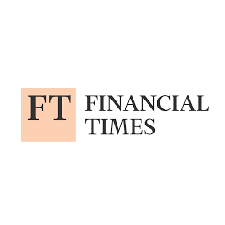
US inflation fell sharply to 3 per cent in June, sending the dollar lower and highlighting the Federal Reserve’s relative success at bearing down on price pressures.
The improved picture in yesterday’s data stands in sharp contrast to other advanced economies such as the UK, where the Bank of England is struggling to control inflation of 8.7 per cent.
US markets reacted positively to the data, with the main stock indices hitting 15-month highs. The two-year Treasury yield, which moves with interest rate expectations, fell to a two-week low of 4.73 per cent, while the US dollar index hit its weakest point in 15 months.
The annual increase in the consumer price index slowed from 4 per cent in May to 3 per cent in June, the slowest rate of inflation since March 2021, compared with expectations of 3.1 per cent.
“After a punishing stretch of high inflation that eroded consumers’ purchasing power, the fever is breaking,” said Bill Adams, chief economist at Comerica Bank.
The headline rate of inflation has been moving closer to the Fed’s 2 per cent target after peaking at more than 9 per cent last year. However, core inflation, which strips out volatile food and energy costs, has proved more resilient, raising expectations that the US central bank will still need to lift interest rates further. Core CPI fell more modestly, from 5.3 per cent to 4.8 per cent.
“Headline inflation is coming down, but . . . there is still quite a distance to go from 4.8 per cent to where the Fed wants core inflation to be at 2 per cent,” said Torsten Slok, chief economist at Apollo Global Management. “Taken with the employment report, this is still likely to mean another rate increase.”
Labour market data released last week suggested that the Fed’s aggressive rate rises were beginning to cool the economy, with jobs growth slowing.
However, it also highlighted continued inflationary pressures, with unemployment still close to a multi-decade low and wages growing well above the levels considered consistent with the Fed’s target inflation rate.
The Fed has raised its benchmark interest rate to a range of 5 to 5.25 per cent from close to zero at the start of 2022. Officials kept rates steady at their most recent policy meeting in June to take stock of the effect of previous rises but have made clear they expect further increases before the end of the year.
Sophia Drossos, an economist at Point72 Asset Management, said the Fed was likely to raise rates this month but added that the combination of yesterday’s data and tentative signs of cooling in the labour market “reinforces the view that the path for the Fed is more uncertain after July”.
“What we’re seeing is consistent with the market scaling back tightening expectations after the July meeting,” she said, “but it doesn’t seem that it should be pricing in scope for rate cuts this year. This is consistent with higher for longer, perhaps ‘one and done’ as the Fed goes on pause and considers its next move.”
Whereas the Fed appears to be closing in on the end of its monetary tightening campaign, the BoE and the European Central Bank are expected to plough on with several more rate rises this year.
According to futures markets, the BoE is forecast to lift its benchmark rate another percentage point this year to 6 per cent by early 2024. The ECB is projected to deliver about half a percentage point more of rate rises this year. China’s economy teetered on the brink of deflation in June, with flat annual CPI, adding to calls for more stimulus.
© RIPRODUZIONE RISERVATA

Articolo tratto da “Financial Times” del 13/07/2023


